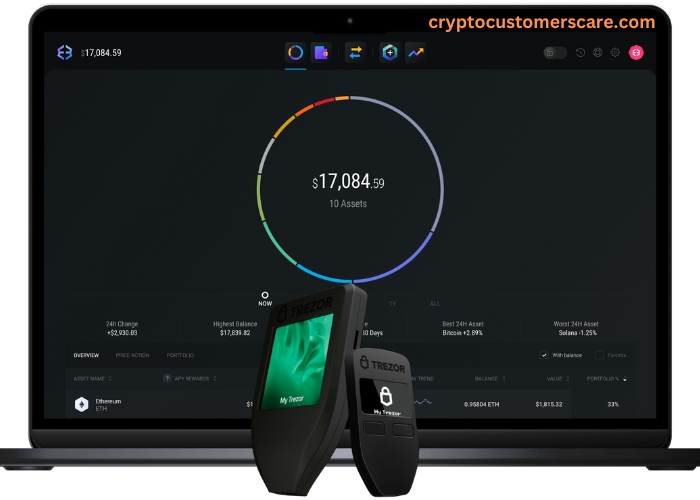Ethereum has become one of the most popular cryptocurrencies, and if you’re a user looking to securely manage your Ethereum assets, downloading and installing an Ethereum Wallet on your PC is essential. An Ethereum Wallet allows you to store, send, and receive Ethereum tokens, as well as interact with decentralized applications (DApps) on the Ethereum network. In this comprehensive guide, we will walk you through the process of downloading, installing, and setting up an Ethereum Wallet on your PC, along with tips on securing and managing your wallet effectively.
Why use Ethereum Wallet on PC?
Using an Ethereum Wallet on your PC offers several advantages over web-based or mobile wallet options. First and foremost, it provides you with full control and ownership of your private keys, ensuring that your funds are secure and protected from potential online threats.
Additionally, a PC-based wallet allows for more advanced functionalities, such as participating in ICOs (Initial Coin Offerings), interacting with smart contracts, and accessing the full range of features offered by the Ethereum network. With a PC-based wallet, you can also enjoy a more seamless and responsive user experience, as it leverages the power of your computer’s hardware.
System Requirements for Ethereum Wallet on PC
Before you proceed with downloading and installing an Ethereum Wallet on your PC, it’s important to ensure that your system meets the necessary requirements. The Ethereum Wallet is compatible with Windows, macOS, and Linux operating systems.
For Windows users, it requires a minimum of Windows 7 or later versions, with at least 4GB RAM and 50GB of free disk space. macOS users should have macOS 10.12 or later, with 4GB RAM and 50GB of free disk space. Linux users will need a 64-bit distribution, with 4GB RAM and 50GB of free disk space.
Downloading Ethereum Wallet on PC
To download the Ethereum Wallet on your PC, follow these steps:
- Visit the official Ethereum website at ethereum.org.
- Navigate to the “Tools” or “Wallets” section of the website.
- Look for the Ethereum Wallet and click on the download link corresponding to your operating system (Windows, macOS, or Linux).
- The download should start automatically. If it doesn’t, click on the provided download link.
- Once the download is complete, locate the downloaded file on your computer.
Installing Ethereum Wallet on PC
After you have downloaded the Ethereum Wallet on your PC, it’s time to install it. Here’s how you can do it:
- Locate the downloaded file on your computer and double-click on it to initiate the installation process.
- Follow the on-screen instructions to proceed with the installation.
- Choose the destination folder where you want to install the Ethereum Wallet.
- Review the installation settings and make any necessary adjustments.
- Click on the “Install” button to start the installation process.
- Wait for the installation to complete. This may take a few minutes, depending on your system’s performance.
Setting up Ethereum Wallet on PC
Once the Ethereum Wallet is installed on your PC, it’s time to set it up. Follow these steps to get started:
- Launch the Ethereum Wallet application by locating it in your installed programs or applications.
- The Ethereum Wallet will prompt you to choose a location for your wallet data. Select a secure and easily accessible location on your PC.
- Create a strong and unique password for your wallet. Remember to use a combination of uppercase and lowercase letters, numbers, and special characters.
- Write down your password and keep it in a secure place. Losing your password may result in permanent loss of access to your Ethereum funds.
- The Ethereum Wallet will generate a mnemonic phrase (also known as a seed phrase) for you. This phrase is used to recover your wallet in case of any issues or lost passwords. Make sure to write it down and store it securely.
Securing your Ethereum Wallet on PC
To ensure the security of your Ethereum Wallet on your PC, consider implementing the following measures:
- Enable two-factor authentication (2FA) for an additional layer of security. This will require you to provide a second verification code, typically generated by an authentication app on your smartphone, in addition to your password.
- Regularly update your Ethereum Wallet software to the latest version. Developers often release updates to address security vulnerabilities and improve the overall performance of the wallet.
- Keep your operating system and antivirus software up to date to protect against potential malware or hacking attempts.
- Store your mnemonic phrase and password securely, preferably offline or in a hardware wallet. Avoid sharing this information with anyone and be cautious of phishing attempts.
Managing your Ethereum Wallet on PC
Once your Ethereum Wallet is set up and secured, you can start managing your Ethereum assets effectively. Here are some key tasks you can perform using your Ethereum Wallet on your PC:
- Sending and receiving Ethereum: Use your Ethereum Wallet to send and receive Ethereum tokens by specifying the recipient’s Ethereum address and the desired amount.
- Interacting with DApps: Explore and interact with decentralized applications on the Ethereum network. These DApps offer various functionalities, such as decentralized finance (DeFi), gaming, and digital collectibles.
- Participating in ICOs: If you’re interested in investing in new blockchain projects, your Ethereum Wallet can facilitate your participation in Initial Coin Offerings (ICOs) by sending the necessary Ethereum tokens.
- Managing tokens: Many Ethereum Wallets allow you to manage and track different ERC-20 tokens, which are tokens built on the Ethereum blockchain. You can add, remove, or view details of your tokens within the wallet interface.
Troubleshooting common issues with Ethereum Wallet on PC
While Ethereum Wallets are generally reliable, you may encounter some common issues. Here are a few troubleshooting tips to help you resolve them:
- Syncing issues: If your Ethereum Wallet is not syncing properly with the Ethereum network, try restarting the application or checking your internet connection. You can also try changing the network settings to use a different Ethereum node.
- Lost password or mnemonic phrase: If you forget your password or lose your mnemonic phrase, it may be challenging to regain access to your Ethereum Wallet. Make sure to keep multiple secure copies of your password and mnemonic phrase.
- Slow performance: If you experience slow performance with your Ethereum Wallet, check your computer’s resources and ensure that you’re using the latest version of the wallet software. Restarting your computer may also help resolve any performance issues.
Conclusion
Downloading and installing an Ethereum Wallet on your PC is a crucial step in securely managing your Ethereum assets and accessing the full range of functionalities offered by the Ethereum network. By following the steps outlined in this guide, you can easily set up and secure your Ethereum Wallet, allowing you to send, receive, and interact with Ethereum tokens and DApps. Remember to stay vigilant and follow best practices for wallet security to protect your funds from potential threats. Start managing your Ethereum assets with confidence and explore the exciting world of decentralized finance and blockchain technology.







